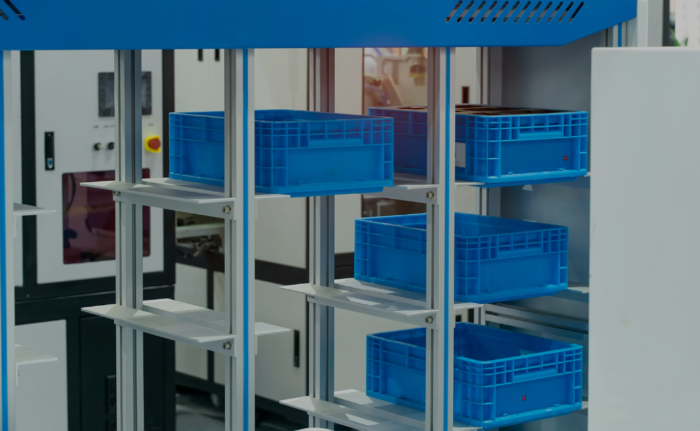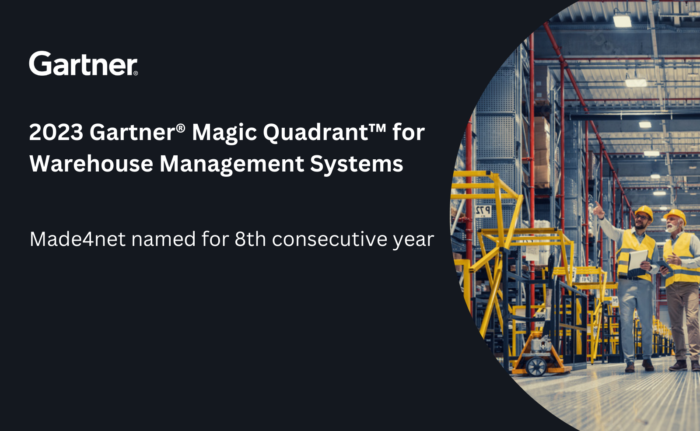
If you’re in the business of maximum efficiency and unparalleled productivity, then you’re no stranger to warehouse automation. As warehousing operations grow more complex, customer expectations rise, and labor shortages continue, automation becomes your ticket to keeping up, while optimizing performance. And it’s more than just robotics. Warehouse automation includes software, artificial intelligence (AI), and system integrations that supplement and enhance your warehouse management system (WMS).
What is Warehouse Automation?
Warehouse automation involves the use of machines and software to minimize manual work and simplify repetitive tasks across warehouse operations. It combines purpose-built technologies designed to boost productivity and streamline workflows. Like using robotic pickers alongside conveyor systems to move goods efficiently. It’s an essential component for staying competitive in today’s rapidly evolving supply chain landscape.
What Aspects of Warehouse Fulfillment Can Be Improved With Automation?
Warehouse automation can enhance nearly every stage of the fulfillment process, from picking to shipping. Here’s how:
Warehouse Automation Examples
Warehouse automation examples include:
- Goods-to-Person (GTP) Systems
- Pick-to-Light Systems
- Put-to-Light Systems
- Robotic Picking Systems
- Voice-directed Warehouse Systems
- Automated Conveyor and Sortation Systems
- Drones for Inventory Management
- Barcode Technology
Warehouse Automation Example #1: Goods-to-Person (GTP) Systems
There are a variety of warehouse automation technologies designed to bring products to the employee, otherwise known as Goods-to-Person technology. These systems include:
Carousel Systems: Rotating bins or shelves that deliver goods to operators
These systems are ideal for small parts or high-SKU environments, helping businesses improve space utilization and boost picking accuracy. By bringing items directly to workers, carousels reduce walking time and fatigue, making them a great solution for ergonomic and high-efficiency order picking.
Automated Guided Vehicles (AGVs): Follow fixed routes using sensors, magnets, or tracks to transport goods within a warehouse.
AGVs are especially useful in facilities with predictable workflows or high-volume material transport needs. They reduce the need for forklifts or manual transport, lower labor costs, and improve safety by minimizing human-machine interactions in high-traffic areas.
Autonomous Mobile Robots (AMRs): Use advanced AI and machine learning to navigate dynamically, avoiding obstacles and optimizing travel paths in real time.
Unlike AGVs, AMRs don’t require predefined paths—they can adapt to their environment. This makes them ideal for dynamic or evolving warehouses. They’re often used in picking operations, meeting pickers and transporting totes or bins from storage areas to packing stations with greater speed and flexibility.
Automated Storage and Retrieval Systems (AS/RS): Computer-controlled systems that store and retrieve inventory with high precision.
AS/RS solutions are a go-to for high-density storage and fast-moving operations. They reduce the need for manual labor and maximize vertical space in warehouses, making them a powerful tool for businesses looking to optimize throughput and space efficiency.
Goods-to-Person (GTP) System Spotlight:
When United Warehouse selected Made4net’s WarehouseExpert™ to replace their homegrown WMS, they set out to build highly automated 3PL facilities. Foundational to this vision was integrating AS/RS technology—an area where Made4net’s WMS excels, offering seamless connectivity and control. This is how they achieved increased storage density, faster order fulfillment, and reduced labor dependency.
Warehouse Automation Example #2: Pick-to-Light Systems
Pick-to-Light (PTL) technology is a highly efficient, light-directed picking method used in order fulfillment. It guides workers to the correct product location using illuminated displays and allows them to confirm picks with the push of a button. PTL systems reduce training time, increase pick speed, and improve accuracy—especially in high-volume or multi-SKU environments.
Warehouse Automation Example #3: Put-to-Light Systems
Put-to-Light systems use light displays to direct workers where to place items during the order fulfillment process. Each slot lights up to indicate where a product should go, reducing human error and speeding up the sorting process. These systems are especially effective in high-volume, multi-order environments like retail distribution.
Warehouse Automation Example #4: Robotic Picking Systems
Robotic picking systems use robotic arms or mobile robots equipped with vision systems and AI to identify, grasp, and move items within a warehouse. They can operate continuously with minimal supervision, increasing picking efficiency and reducing reliance on manual labor. These systems are ideal for repetitive tasks and high-throughput operations.
Warehouse Automation Example #5: Voice-directed Warehouse Systems
Voice-directed systems guide workers through tasks using spoken instructions via headsets. Workers confirm actions verbally, keeping their hands and eyes free, which improves safety and productivity. These systems are commonly used for picking, replenishment, and cycle counting tasks. It helps workers be more productive, increases picking accuracy, and provides leaders with useful data to help manage inventory levels and plan labor accordingly.
Warehouse Automation Example #6: Automated Conveyor and Sortation Systems
Automated conveyor and sortation systems transport goods throughout the warehouse and automatically direct them to the correct location. Using barcodes or RFID, items are identified and routed to specific destinations, significantly reducing manual handling and increasing throughput. These systems are key in fast-paced environments like e-commerce fulfillment centers.
Warehouse Automation Example #7: Drones for Inventory Management
Inventory drones fly through warehouse aisles using cameras and scanning technology to count inventory and verify locations. They can conduct cycle counts faster and more frequently than human workers, improving inventory accuracy and reducing labor costs. Drones are particularly useful in large or high-bay warehouses where manual counts are time-consuming.
Drones for Inventory Management Spotlight:
Barrett Distribution Centers leveraged Made4net’s integration with Gather AI to transform their inventory management process. They use drones to automate cycle counting in their warehouses, particularly in hard-to-reach, high-bay storage areas. These drones help maintain inventory accuracy without disrupting operations, replacing the need for manual counting. By using drones to autonomously scan barcodes and capture high-resolution images of inventory, Barett was able to achieve new levels of accuracy, efficiency, and cost savings. This shift not only improved inventory accuracy but also freed up staff to focus on more strategic warehouse operations.
Warehouse Automation Example #8: Barcode Technology
Barcode systems are a fundamental automation tool in modern warehouses. They use machine-readable labels to identify products, pallets, and locations, enabling real-time tracking, faster workflows, and a dramatic reduction in manual errors.
Next Steps: Warehouse Automation
Warehouse automation has become a must-have in today’s fast-paced, ever-evolving world of complex logistics. But it’s not about automating for automation’s sake—it’s about identifying the areas where automation will deliver the greatest impact for your specific operation. Whether that’s optimizing inventory counts with drones, reducing pick errors with PTL systems, or speeding up product movement with conveyors, the key is to match the right technology to the right problem. The best automation strategy is the one that supports your people, scales with your growth, and empowers your business to deliver better, faster, and smarter. Need help with warehouse automation? Our experts are here to help.


